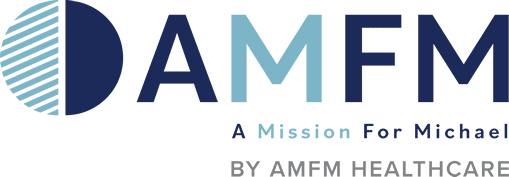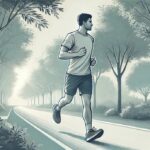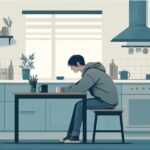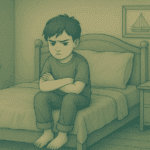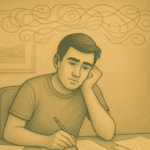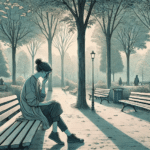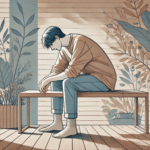Key Takeaways
- Depression and restless leg syndrome (RLS) share dopamine and serotonin imbalances, creating a bidirectional link where each condition can worsen the other.
- Sleep disruption from depression or RLS intensifies symptoms in both conditions, forming a cycle of fatigue, negative thinking, and emotional distress.
- Stress, anxiety, and certain medications (especially some antidepressants) can trigger or worsen RLS symptoms, highlighting the need for careful management.
- Therapy-focused approaches like Cognitive Behavioral Therapy (CBT), combined with lifestyle adjustments—exercise, sleep hygiene, stress management, and diet—provide the most effective relief.
- A Mission For Michael (AMFM) offers holistic, individualized treatment that integrates therapy, sleep, and sensorimotor care, wellness practices, and family support to help patients manage depression and RLS effectively.
The Depression-RLS Connection: What Science Tells Us
A growing body of research highlights a strong bidirectional link between depression and restless legs syndrome (RLS). Both conditions involve imbalances in dopamine and serotonin, neurotransmitters that regulate mood, movement, and sensory processing. This shared neurochemical foundation helps explain why treatments for one condition can sometimes influence the other, either positively or negatively.
Clinical evidence also shows that symptom severity in one condition often mirrors the other. As depressive symptoms intensify, RLS discomfort tends to worsen as well, creating what researchers describe as a “mutually reinforcing relationship” that can complicate treatment and recovery.
A 2025 study found that approximately 25% of psychiatric outpatients had restless legs syndrome (RLS). Those with RLS experienced poorer sleep, higher depression and anxiety levels, and increased suicidal thoughts, highlighting the strong link between RLS and mental health challenges.
Founded in 2010, A Mission For Michael (AMFM) offers specialized mental health care across California, Minnesota, and Virginia. Our accredited facilities provide residential and outpatient programs, utilizing evidence-based therapies such as CBT, DBT, and EMDR.
Our dedicated team of licensed professionals ensures every client receives the best care possible, supported by accreditation from The Joint Commission. We are committed to safety and personalized treatment plans.
How Depression May Trigger Restless Leg Syndrome
Depression doesn’t just coexist with restless legs syndrome (RLS). It can trigger or worsen it through several overlapping mechanisms.
Shared Brain Chemistry
Both depression and RLS involve dopamine and serotonin imbalances, affecting mood, movement, and sensory regulation. Neuroimaging studies show reduced dopamine activity in brain regions linked to both conditions, explaining why they often appear together. Disrupted circadian rhythms in depression may further reduce dopamine at night, intensifying RLS symptoms during evening hours.
Sleep Disruption
Depression frequently causes insomnia and fragmented sleep, creating ideal conditions for RLS to emerge or worsen. Poor sleep amplifies both leg discomfort and low mood, forming a cycle that reinforces each condition.
Medication Effects
Some antidepressants, especially SSRIs, SNRIs, and tricyclics, can trigger or aggravate RLS symptoms in susceptible individuals. Studies show patients on antidepressant medications may experience RLS-like side effects.
Stress and Anxiety
Emotional stress and anxiety heighten muscle tension and neurological sensitivity, often making RLS sensations more intense. Managing stress through relaxation techniques or mindfulness can improve both depressive and RLS symptoms simultaneously.
In short, depression can set off a chain reaction through brain chemistry, sleep disruption, medication effects, and stress that makes RLS harder to manage unless both conditions are addressed together.
Signs You’re Experiencing Both Conditions
Recognizing when both depression and restless legs syndrome (RLS) are at play is essential for effective treatment. Their symptoms often overlap, making it easy to mistake one for the other.
Nighttime Leg Discomfort That Eases with Movement
RLS causes an irresistible urge to move your legs, often with sensations like creeping, tingling, or pulling. These symptoms worsen during rest and at night but improve briefly when you move. If movement brings immediate relief, it’s likely more than just restlessness from depression.
Sleep Problems That Go Beyond Insomnia
While depression often disrupts sleep, RLS adds specific physical discomfort that makes it hard to fall or stay asleep. If leg sensations are not anxious thoughts, keep you awake, or if sleep issues persist despite mood improvement or medication, RLS may be involved.
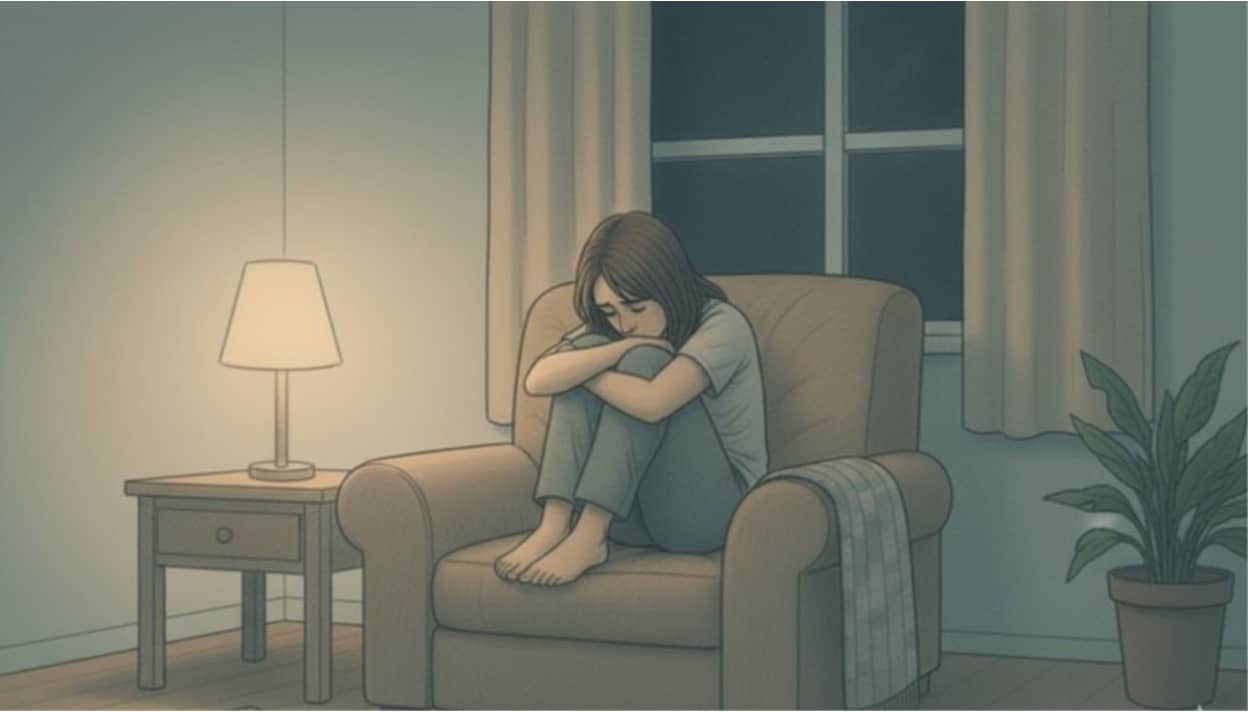
Physical comfort doesn’t always translate to emotional well-being.
Persistent Daytime Fatigue
Depression can cause tiredness, but when fatigue lingers despite antidepressant treatment, hidden RLS may be the cause. Frequent micro-awakenings from leg movement can severely reduce sleep quality, leading to exhaustion even after a full night’s rest.
If you notice both low mood and physical restlessness, especially worsening at night, discuss both conditions with a healthcare provider. Treating one without the other may not bring full relief.
The Vicious Cycle: When RLS Worsens Depression
Just as depression can trigger RLS, RLS can intensify depressive symptoms, creating a cycle where each condition reinforces the other. Effective treatment often requires addressing both simultaneously.
Sleep Deprivation Amplifies Depression
RLS frequently disrupts sleep, leading to fragmented or insufficient rest. Even one night of poor sleep can heighten negative thinking, reduce emotional regulation, and lower motivation, all core features of depression. Chronic sleep loss also affects brain regions responsible for mood regulation and can alter stress response systems, increasing inflammatory markers and stress hormones that worsen depressive symptoms.
Physical Discomfort Fuels Emotional Distress
Persistent leg discomfort from RLS creates a constant physical and psychological burden. Many patients develop anxiety around bedtime, fearing sleepless nights, which further intensifies both RLS symptoms and depressive thoughts. Over time, this negative feedback loop can make both conditions harder to treat unless sleep disruption is directly addressed.
Lifestyle Changes That Provide Relief
Specific lifestyle adjustments can significantly ease both depression and restless legs syndrome (RLS), especially when combined with medical care.
Exercise and Movement
Moderate aerobic exercise, such as walking, cycling, or swimming for 30–40 minutes most days, improves mood and reduces inflammation. For RLS, exercising earlier in the day is usually best, while gentle leg stretches or yoga before bedtime can provide immediate relief and enhance relaxation. Consistency matters more than intensity, short daily walks help maintain benefits even on low-energy days.
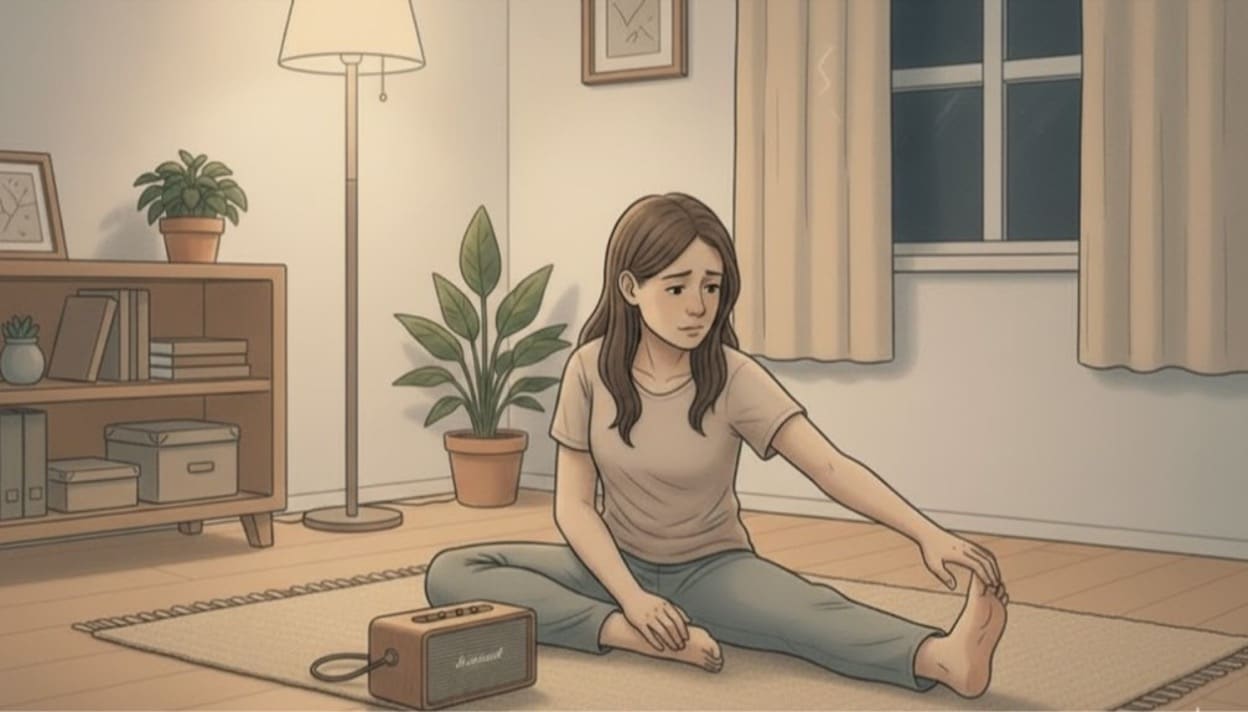
Gentle stretches before bed can help ease restless leg symptoms and improve sleep quality.
Sleep Hygiene
Optimizing the sleep environment is crucial. Cool bedrooms, breathable bedding, weighted blankets, and consistent sleep schedules support natural circadian rhythms and reduce RLS intensity. Limiting screens before bed and including calming pre-sleep routines, such as stretching or warm baths, can ease both leg discomfort and sleep anxiety.
Stress Reduction
Techniques like diaphragmatic breathing, progressive muscle relaxation, or mindfulness reduce muscle tension, lower nervous system arousal, and help interrupt depressive rumination. Regular practice improves nighttime symptom management.
Diet and Nutrition
A nutrient-rich, anti-inflammatory diet supports both mood and neurological health. Magnesium- and iron-rich foods help RLS, while omega-3s and antioxidants benefit depression. Limiting caffeine and alcohol, eating lighter evening meals, and maintaining proper meal timing can further reduce symptoms.
Identifying Triggers
Tracking potential triggers, such as certain medications, long periods of inactivity, or specific foods, empowers individuals to make targeted lifestyle adjustments and improve overall symptom management.
Treatment Options That Address Both Conditions
Managing depression and restless legs syndrome (RLS) effectively usually requires a coordinated approach that addresses both conditions simultaneously. Working with healthcare providers familiar with the connection is key, and patience is often necessary to find the right combination of strategies.
Therapy and Sleep-Focused Interventions
Cognitive Behavioral Therapy (CBT) is particularly effective for people with both depression and RLS. CBT helps challenge negative thought patterns, build coping skills, and improve mood. When adapted for sleep CBT, it addresses insomnia, sleep anxiety, and the nighttime distress caused by RLS. CBT for depression can break the vicious cycle of sleep disruption and low mood without relying on medication alone.
Lifestyle and Iron Support
Addressing iron deficiency can improve RLS symptoms and indirectly support better sleep and mood. Ferritin levels below 75 ng/mL are linked to worse RLS symptoms, so monitoring and supplementation under a healthcare provider’s guidance is important.
Medication When Needed
For some patients, medications may complement therapy, especially when symptoms are severe. Options that minimally interfere with RLS include bupropion for depression or dopamine-targeted treatments for RLS. Close coordination between a psychiatrist and a sleep specialist helps balance benefits while minimizing side effects.
In short, combining CBT, sleep management, lifestyle adjustments, and selective medication offers the most comprehensive approach, targeting both the psychological and physical aspects of these intertwined conditions.
When to Seek Professional Help
Professional evaluation becomes essential when RLS symptoms significantly impact sleep quality or when depression persists despite initial treatment efforts. The complexity of managing both conditions often requires coordinated care between mental health providers and sleep specialists. Red flags that indicate the need for immediate professional intervention include suicidal thoughts, severe sleep deprivation (less than 5 hours nightly for extended periods), or RLS symptoms that occur during the day and at night, too, significantly limiting daily activities. Early intervention typically leads to better outcomes and prevents the development of chronic, treatment-resistant patterns in both conditions.
Why Choose A Mission For Michael
At A Mission For Michael, we believe healing is a deeply personal journey, one that demands more than just a standard clinical package. Aligned with AMFM’s core ethos of compassionate, evidence-based care, our mission centers on creating a therapeutic environment where patients with complex, intersecting challenges, such as depression and restless legs syndrome, can find meaningful, lasting relief.
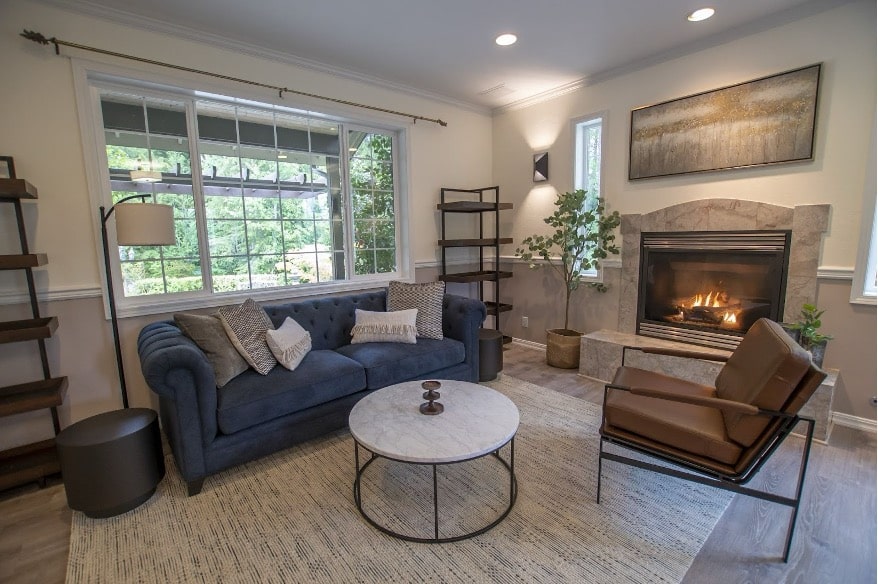
Cognitive Behavioral Therapy (CBT) addresses negative thought patterns while improving sleep habits.
Here’s what sets us apart:
- Holistic, individualized treatment plans: Every person has unique biological, psychological, and social needs. We develop comprehensive plans designed according to each individual, integrating mental health care, sleep, and sensorimotor therapies, wellness practices, and family support.
- Therapy-driven approach: We prioritize high-impact psychotherapies such as CBT, Dialectical Behavior Therapy (DBT), and family therapy while thoughtfully integrating medical treatments as needed.
- Experienced, multidisciplinary teams: Our clinicians, psychiatrists, sleep experts, and wellness practitioners collaborate continuously, ensuring no aspect of your health is treated in isolation.
- Thoughtful residential settings: Modeled on AMFM’s residential homes across California, Minnesota, and Virginia, our environments are comfortable, supportive, and designed to encourage recovery through structure, safety, and therapeutic community.
- Proven outcomes & accountability: With over 85% of clients recommending AMFM based on recent outcomes data, we aim to match that level of trust by consistently evaluating and refining our care.
- Transparent, supportive access: From insurance verification to treatment navigation, we guide every step of the path with confidentiality, education, and compassion.
If you’re managing overlapping mental health and physical symptoms and looking for a care model that places therapy, integration, and human connection at its best, A Mission For Michael provides a meaningful path forward. Let us help you get the right help on your terms, in your time.
Frequently Asked Questions (FAQs)
Can antidepressants make restless leg syndrome worse?
Yes. Some antidepressants, especially SSRIs, can worsen RLS by affecting dopamine levels. There are usually better options. If your RLS worsens after starting medication, talk to your doctor before making any changes.
Is restless leg syndrome part of depression?
No. RLS is a separate neurological condition, but it often overlaps with depression. Poor sleep from RLS can worsen mood, while depression can increase RLS symptoms. Treating both together gives the best results.
Are there natural ways to help both?
Yes. Regular exercise, yoga, and mindfulness can ease both depression and RLS. Eating foods rich in iron, magnesium, and omega-3s may also help. Be consistent and check with a healthcare provider before starting supplements.
Can children have both RLS and depression?
Yes. Kids with RLS may seem restless or be misdiagnosed with ADHD. Teens with RLS are more likely to experience depression due to poor sleep. Early evaluation and gentle, age-appropriate treatments work best.
How long before symptoms improve?
It depends. If RLS is linked to antidepressants, symptoms may ease within a couple of weeks after adjusting medication. When both conditions are more deeply connected, meaningful improvement usually appears within 4–8 weeks of consistent care.
At A Mission for Michael, our integrated treatment approach combines therapy, medical expertise, and holistic support to help individuals manage complex conditions like depression and RLS more effectively.
